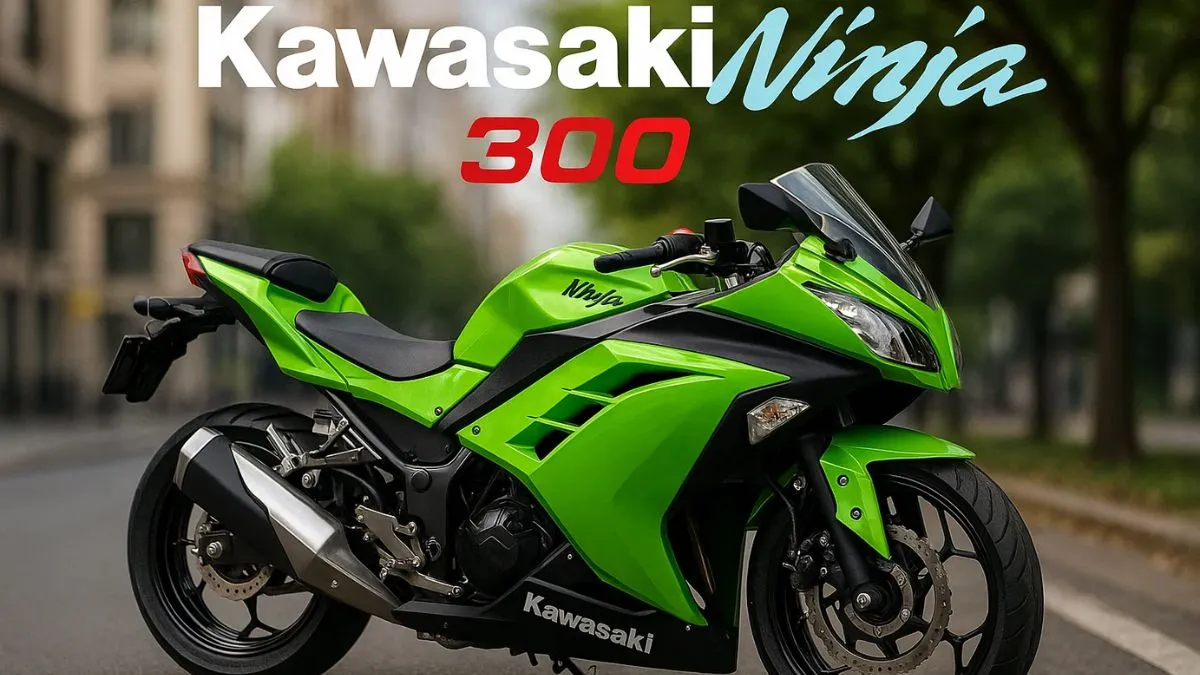The Kawasaki Ninja 300 is one of the most popular entry-level sport bikes, known for its sharp design, comfortable handling, and refined engine performance. It strikes the perfect balance between sporty excitement and daily rideability, making it ideal for beginners and experienced riders alike. With its aerodynamic styling, smooth power delivery, and strong road presence, the Ninja 300 continues to be a favorite choice for those who want a motorcycle that feels premium without being too aggressive.
Highlight Table
| Feature | Specification |
|---|---|
| Engine | 296cc, Liquid-Cooled, Twin-Cylinder |
| Power | Approx. 39 PS @ 11,000 RPM |
| Torque | Approx. 26.1 Nm @ 10,000 RPM |
| Transmission | 6-Speed Manual |
| Fuel System | Fuel Injection |
| Brakes | Front Disc and Rear Disc with ABS (variant dependent) |
| Mileage | Around 25–30 km/l (riding conditions vary) |
| Seat Height | 785 mm |
| Weight | Around 172 kg |
Design and Styling
The Kawasaki Ninja 300 features a sharp and sporty design inspired by larger Ninja models. The aggressive front fairing, sleek body panels, and aerodynamic contours make it look fast even when standing still. The split seats not only enhance the sporty appeal but also provide comfort for both rider and pillion. The twin headlamps give it a bold and confident front profile, while the overall build quality reflects Kawasaki’s premium craftsmanship.
Engine and Performance
The Ninja 300 is powered by a 296cc twin-cylinder engine, known for its smooth and refined power delivery. It offers a controlled acceleration that is beginner-friendly, yet powerful enough to provide thrilling rides for experienced riders. The engine revs cleanly and feels lively, especially at higher RPMs, making highway cruising enjoyable. The 6-speed gearbox shifts smoothly, contributing to the overall riding confidence.
Riding Comfort and Handling
One of the key strengths of the Ninja 300 is its comfortable riding posture. Unlike more aggressive track-focused bikes, this model strikes a balance — sporty yet suitable for daily use. The handlebars, footpeg position, and seat height are designed to keep the rider comfortable on city rides and long-distance trips. The suspension setup offers stability on highways and absorbs most bumps reasonably well, providing a smooth and controlled ride.
Braking and Safety
The bike comes with disc brakes on both front and rear, offering reliable stopping power. Some variants include ABS, which enhances safety during sudden braking or wet road conditions. The brake feedback is progressive, helping new riders build confidence over time.
Fuel Efficiency and Practicality
The Ninja 300 is known to offer around 25–30 km/l, depending on riding style and road conditions. This makes it one of the more fuel-efficient sport bikes in its segment. Its overall maintenance cost is reasonable for a twin-cylinder motorcycle, and spare parts availability has improved over the years, making it practical for ownership.
Build Quality and Durability
Kawasaki’s strong reputation for durability is reflected in the Ninja 300. The materials, paint finish, and overall engineering quality ensure long-lasting performance. Riders can rely on this bike not only for city commutes but also for weekend highway rides.
Conclusion
The Kawasaki Ninja 300 is an excellent choice for anyone looking to step into the world of sport bikes. Its balanced engine performance, comfortable ergonomics, stylish looks, and dependable braking system make it a well-rounded motorcycle suitable for daily commuting, long rides, and occasional spirited riding. Whether you’re a beginner or an enthusiast, the Ninja 300 provides a riding experience that is exciting yet manageable.








